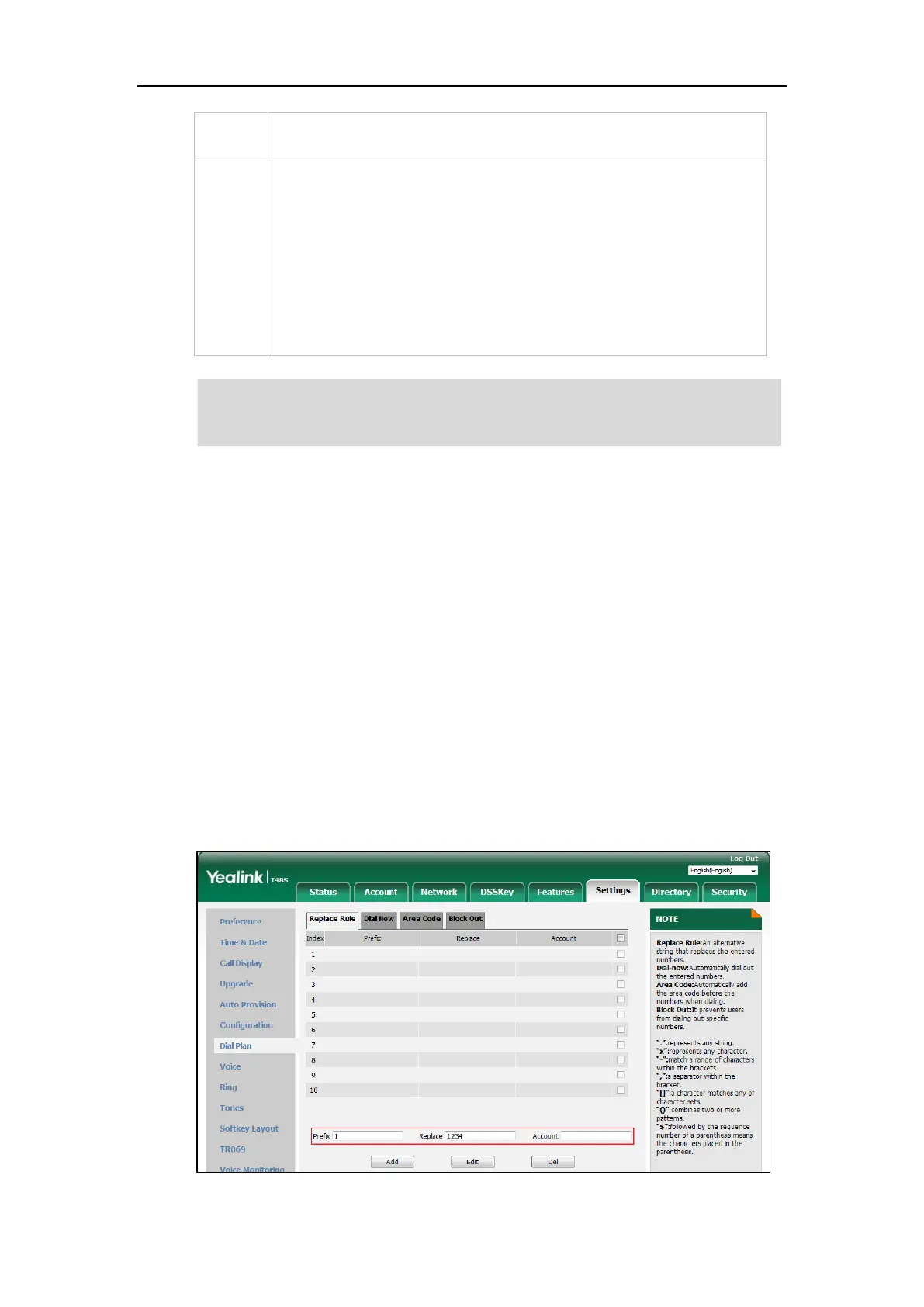User Guide for the SIP-T48S IP Phone
122
logically combine two or more patterns. Example:
"([1-9])([2-7])3" would match "923", "153", "773", etc.
The “$” should be followed by the sequence number of a parenthesis. The “$”
plus the sequence number means the whole character or characters placed in
the parenthesis. The number directs to the right parenthesis when there are
more than one. Example:
A replace rule configuration, Prefix: "001(xxx)45(xx)", Replace: "9001$145$2".
When you dial out "0012354599" on your phone, the IP phone will replace the
number with "90012354599". “$1” means 3 digits in the first parenthesis, that
is, “235”. “$2” means 2 digits in the second parenthesis, that is, “99”.
Note
Replace Rule
You can configure one or more replace rules (up to 100) to remove the specified string and
replace it with another string. You can configure a pattern with wildcards (refer to the expression
syntax in the table above), so that any string that matches the pattern will be replaced. This
feature is convenient for you to dial out a long number. For example, a replace rule is configured
as “prefix: 1” and “replace: 1234”, when you try to dial out the number “1234”, you just need to
enter “1” on the phone and then tap Send.
To add a replace rule via web user interface:
1. Click on Settings->Dial Plan->Replace Rule.
2. Enter the string (e.g., 1) in the Prefix field.
3. Enter the string (e.g., 1234) in the Replace field.
4. Enter the desired line ID in the Account field or leave it blank.
The IP phone supports a new dial plan mechanism – digit map. You can use one or more
matching rules in one digit map string. If the new dial plan mechanism is enabled, old dial plan
will be ignored. For more information, contact your system administrator.
